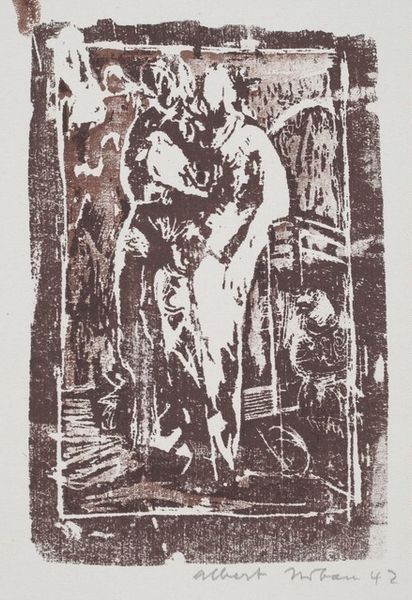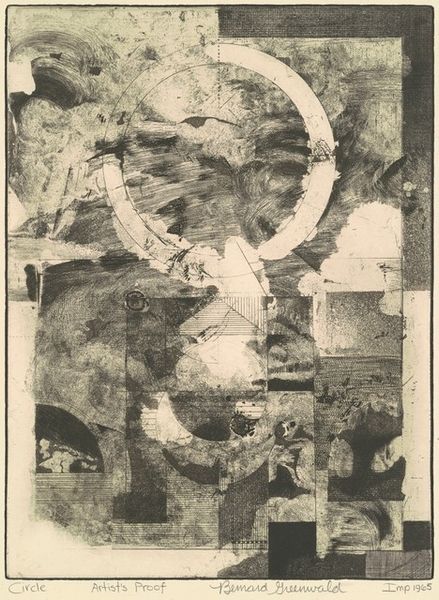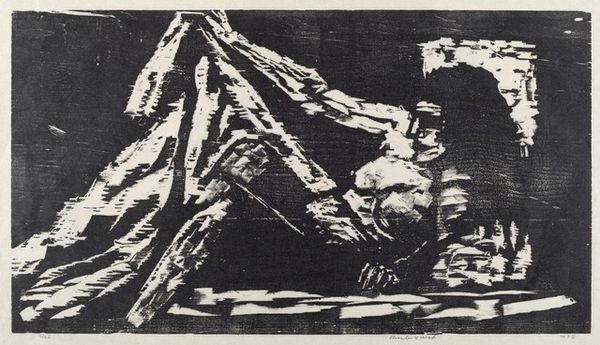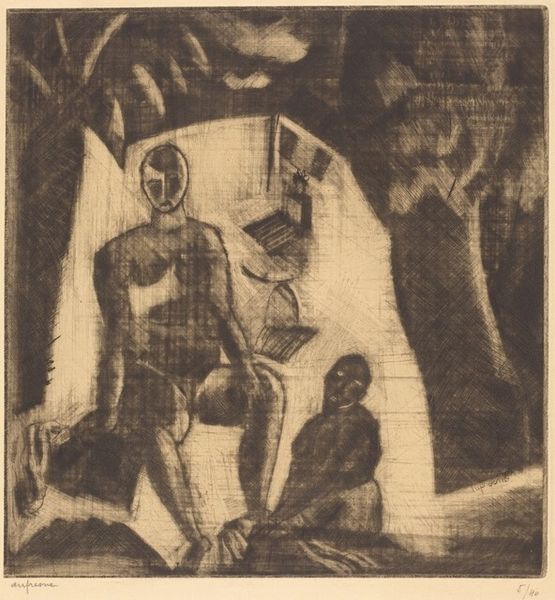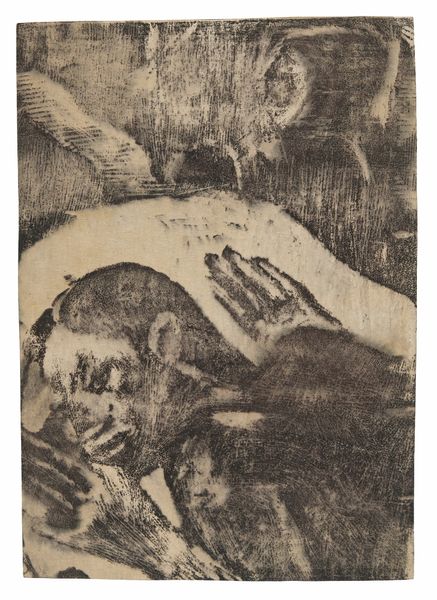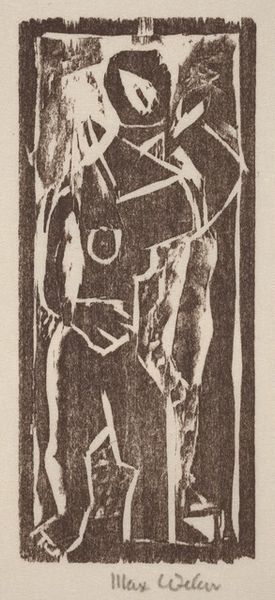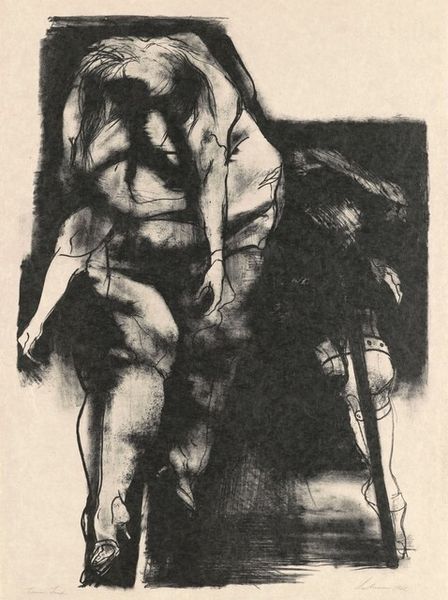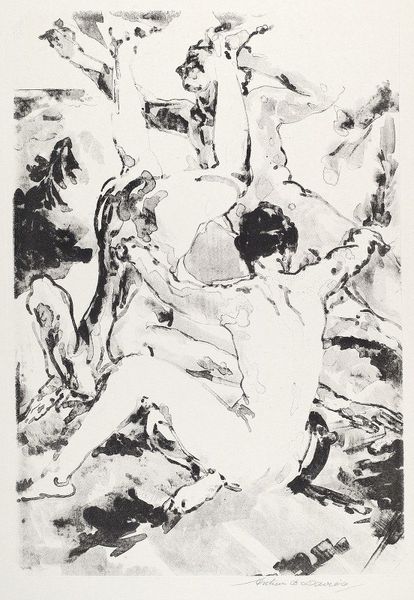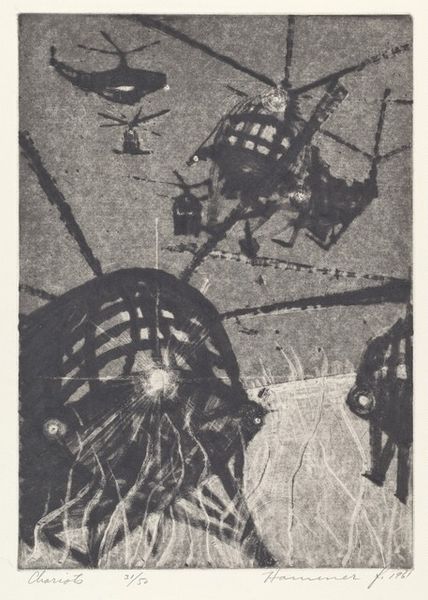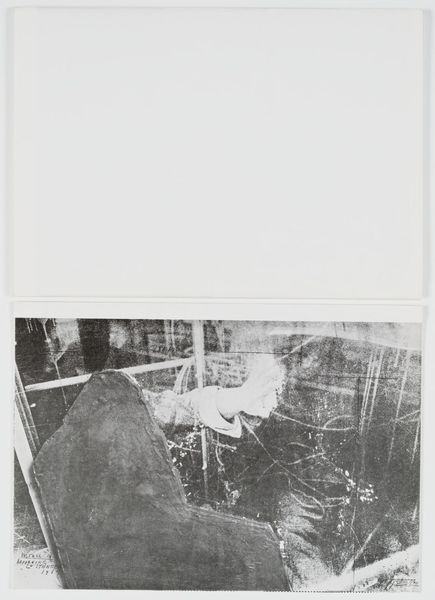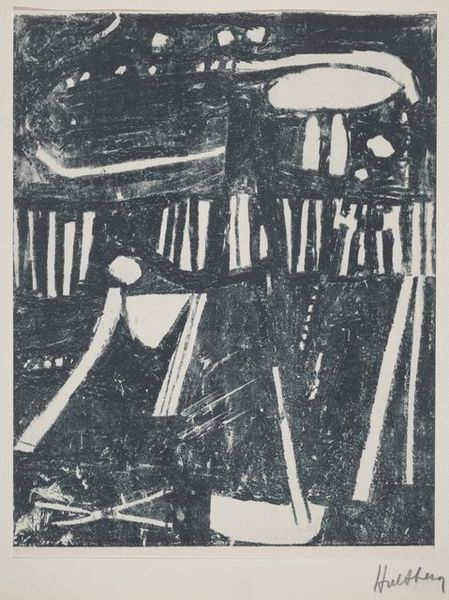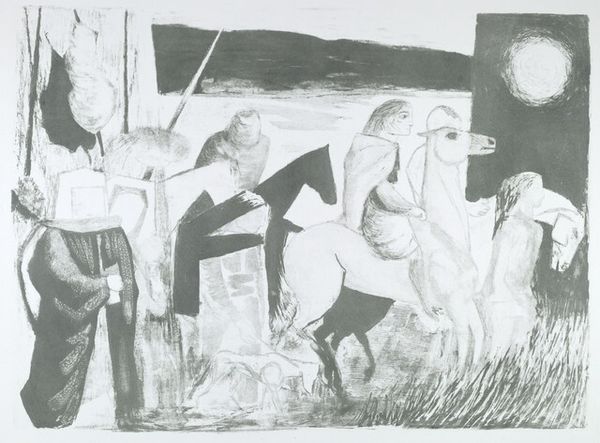
#
shading to add clarity
# print
#
old engraving style
#
cartoon sketch
#
pencil drawing
#
ink drawing experimentation
#
pen-ink sketch
#
limited contrast and shading
#
tattoo art
#
pencil art
#
doodle art
Copyright: National Gallery of Art: CC0 1.0
Curator: This is “Portland II”, a print created by James McGarrell in 1963. The black and white composition is striking. Editor: It’s heavy. The high contrast flattens the space, making the figure look almost trapped, or at least heavily grounded. Curator: Interesting observation. Notice the setting. We have this figure reclining, and behind them a scene unfolds— perhaps through a window, or a distorted mirror reflecting outward? Is this 'Portland,' Oregon, depicted outside, or something else entirely? Editor: It's the 'or something else' that pulls me in. The scene beyond feels...manufactured. And that tiled floor - or maybe a rug? - is really insistent about flatness. What printmaking technique did McGarrell employ here? The density of the blacks is impressive. Curator: This almost crude application is quite telling, in this respect. One thinks immediately about various symbols being invoked such as of the female 'odalisque' lounging but the crude flatness might actually symbolize the means in which we've tried to compress lived-in life under industrial progress? The buildings out in the "cityscape" almost look like miniature houses from afar. Editor: Right. So this tension between "high" art—that reclining figure—and what almost reads as a rough illustration style becomes significant. The heavy, almost blocky shadows, speak to the materials he was likely using and, maybe the conditions that helped inform the use of those techniques. Curator: There's also that odd interplay between interiority and exteriority which in symbolic terms invokes ideas about interiority versus exteriority as an internal condition: psychological conflict playing out on a public stage. The woman is resting. Is the industrial city she looks out upon offering solace, or further exacerbating her psychological and emotional unease? Editor: And the social context of 1963 is vital, isn't it? A rapidly changing world, anxieties about industrial expansion…it’s all embedded, almost pressed into, the print's surface through his method. Curator: Absolutely. McGarrell creates a tableau vivant that remains resonant through those dualities in its making as an artwork but in its symbolism of social, and economic change. Editor: It really does bring to light how technique and symbol interlock to convey something potent about labor, progress, and personal experience in that moment.
Comments
No comments
Be the first to comment and join the conversation on the ultimate creative platform.

